Celebrate Tuba Christmas with a Family Fanfare
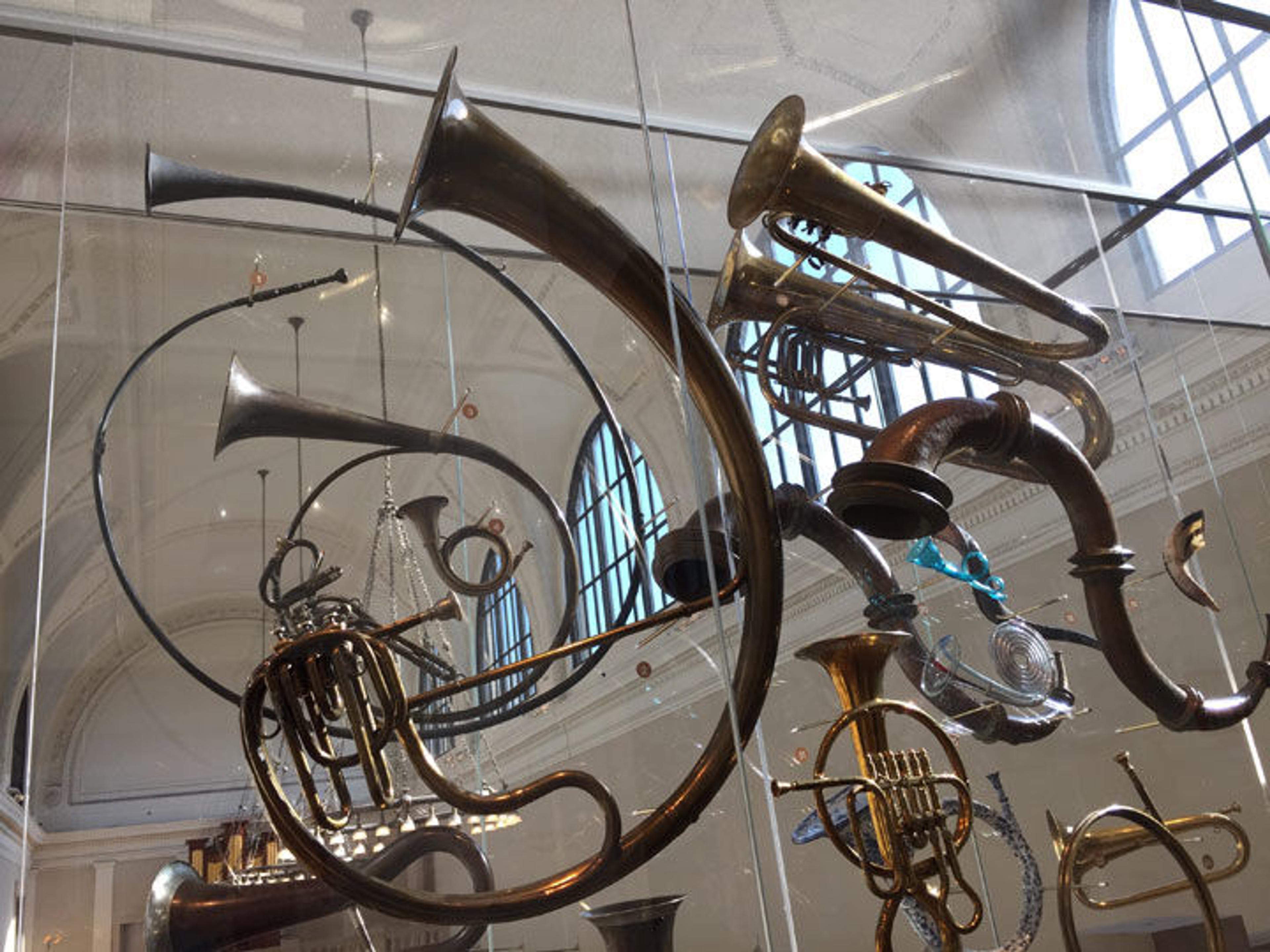
Installation view of Fanfare in gallery 680
«Jingle bells, drummer boys, and heavenly choirs with harps of gold may be synonymous with holiday music for some. But in New York City, it's all about the bass when several hundred tuba players from across the country converge in Rockefeller Plaza to celebrate Tuba Christmas on Sunday, December 17, at 3:30 pm. Warm harmonies float skyward amidst the outstretched limbs of the famous Christmas tree as tubas, sousaphones, euphoniums, and baritones of all shapes and sizes give a free performance of familiar carols and other holiday repertoire.»
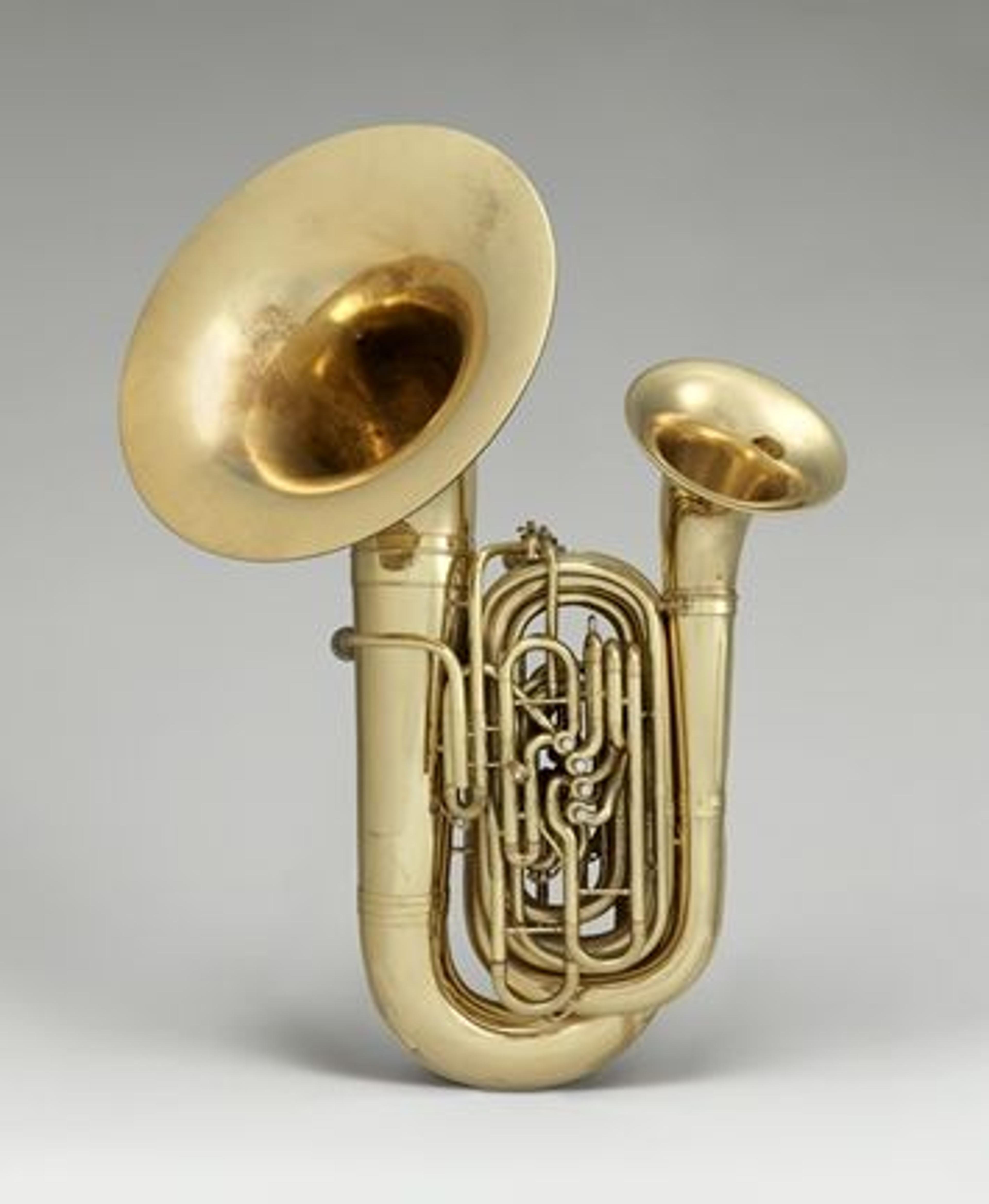
Now an international event with gatherings in 200 cities across the United States, Canada, Great Britain, Australia, and Japan, Tuba Christmas began as a tribute to William J. Bell—an exceptional performer and pedagogue who is regarded as the father of American tuba playing (who just happened to be born on Christmas Day in 1902!). Visitors to The Met can celebrate the spirit of the season with a visit to the Fanfare display, where Bell's eyecatching "Bellophone" presides over an installation of 95 brass instruments from around the world. Here, you can explore the long and diverse history of brass instruments and meet the tuba's extended family.
H. N. White Co. Double tuba and baritone, "Bellophone" in BB-flat, ca. 1930. Cleveland, Ohio, United States. Brass, mother-of-pearl, approx. maximum overall measurements when assembled: 55 1/8 x 39 3/8 x 35 7/16 in. (140 x 100 x 90 cm). The Metropolitan Museum of Art, New York, Gift of Drs. Eli and Carolyn Newberger, 2015 (2015.768.1a–f)
The origins of the tuba as we know it today can be traced to the appearance of valved lower brass instruments in Germany and Austria in the 1820s, followed by Wieprecht and Moritz's invention of the bass-tuba of 1835. These early basses appeared in a variety of configurations and used a number of different valve types—a diversity reflected in the many forms of the modern tuba that have evolved to improve intonation, tone, and agility, and to play a wide body of repertoire.
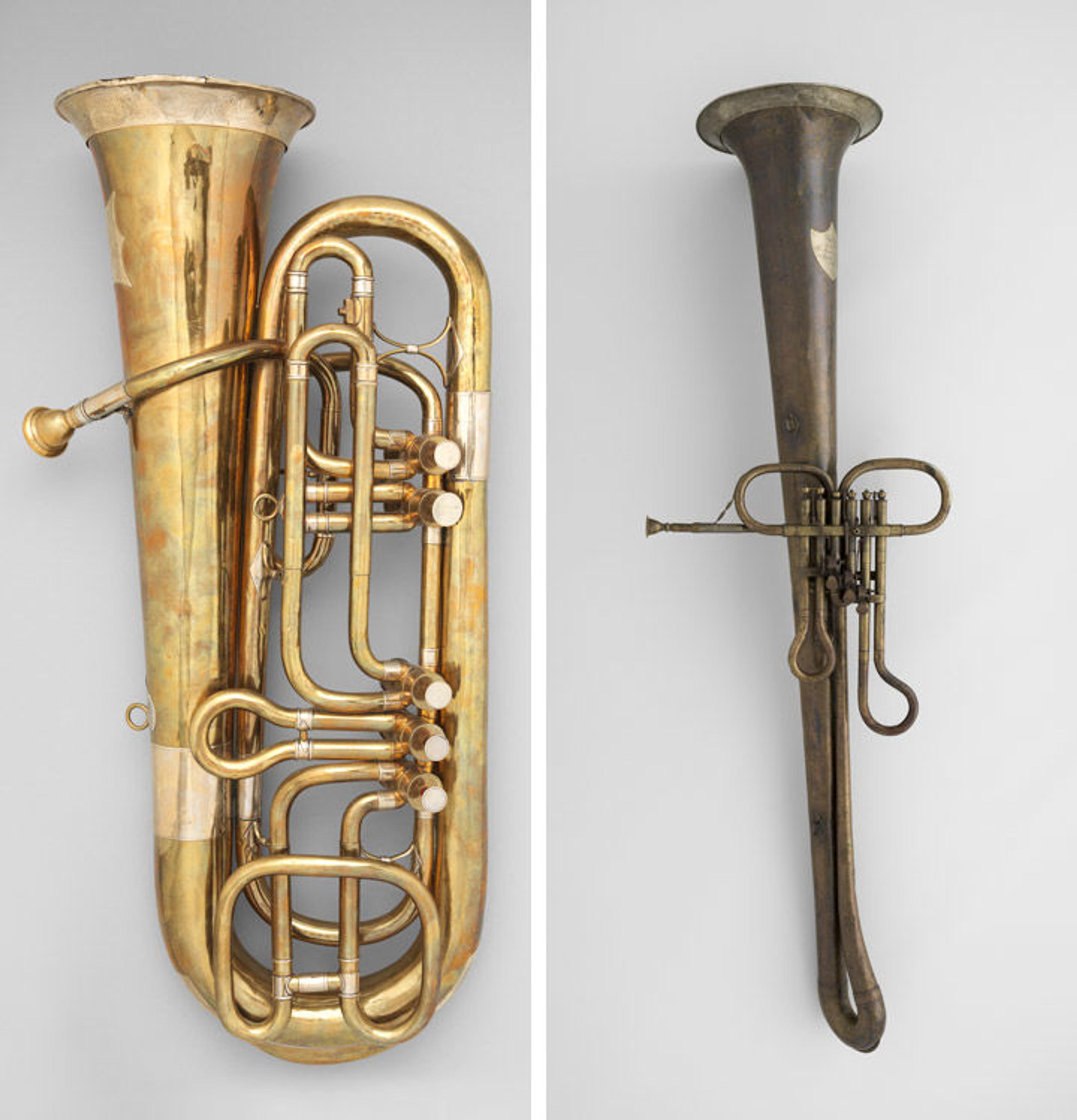
Left: Attributed to C.W. Moritz. Tuba, ca. 1855. Berlin, Germany. Brass, 31 1/2 x 8 x 16 in. (80 x 20.3 x 40.6 cm). The Metropolitan Museum of Art, New York, Purchase, Robert Alonzo Lehman Bequest, 2014 (2014.18). Right: Leopold Uhlmann (Austrian, 1806–1878). Contrabass valve ophicleide in D, ca. 1840. Vienna, Austria. Brass, nickel-silver, 59 1/2 x 18 1/2 x 11 3/8 in. (151.1 x 47 x 28.9 cm). The Metropolitan Museum of Art, New York, The Crosby Brown Collection of Musical Instruments, 1889 (89.4.2457)
The development of the tuba was part of a larger quest for robust bass wind instruments that predates the successful application of valves to brass instruments in 1814. If we consider the cornu, which inspired the design of Adolphe Sax's bass sax tuba, the narrative stretches back to ancient Rome.
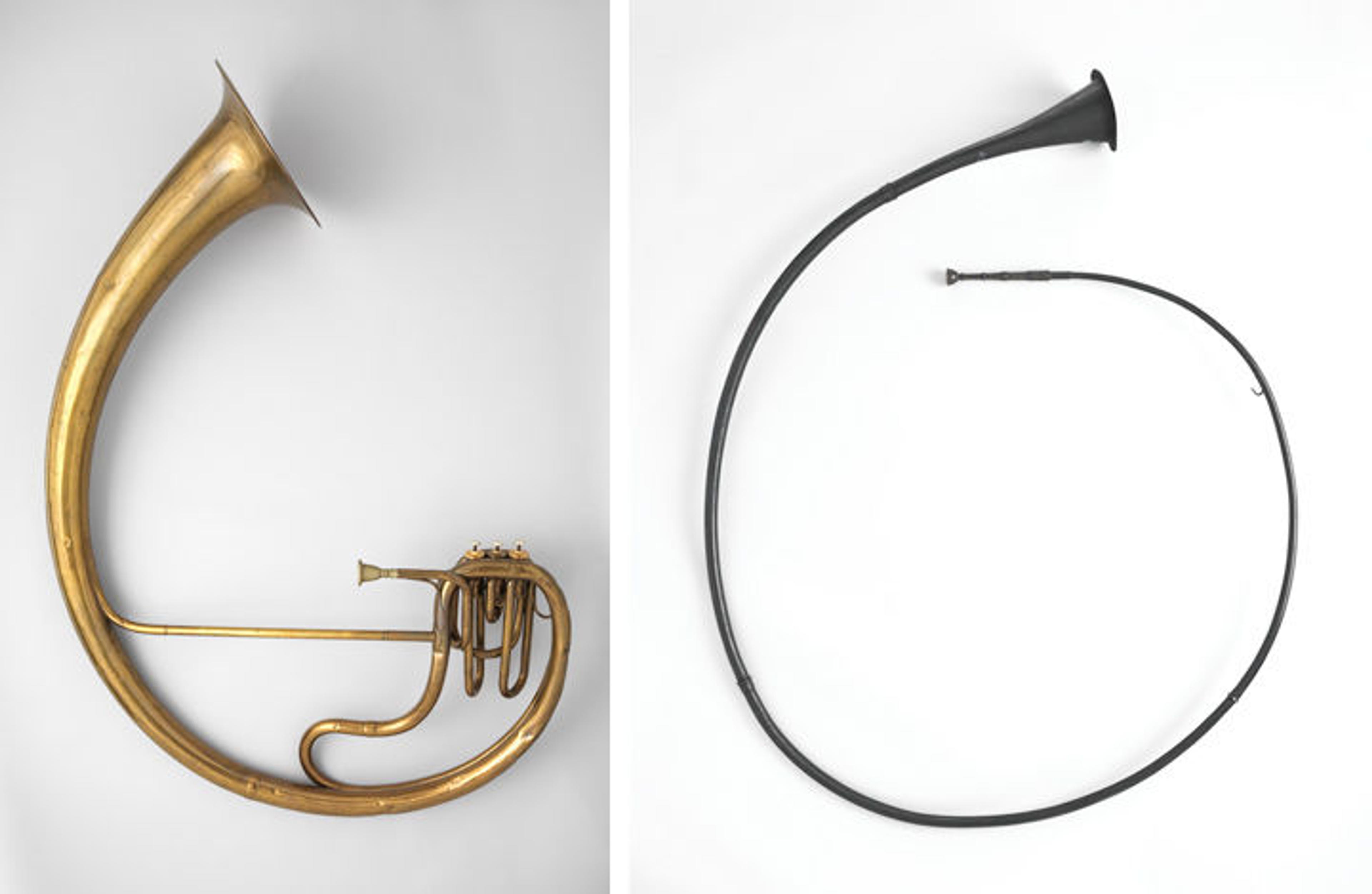
Left: Adolphe (Antoine Joseph) Sax (Belgian, 1814–1894). Bass saxtuba in E-flat, 1855. Paris, France. Brass, 51 x 36 1/2 x 12 1/2 in. (129.5 x 92.7 x 31.8 cm). The Metropolitan Museum of Art, New York, The Crosby Brown Collection of Musical Instruments, 1889 (89.4.1109). Right: Cornu (reproduction), late 19th century. Italian (Roman reproduction). Metal, wood, 47 1/2 x 39 1/8 x 5 1/16 in. (120.7 x 99.4 x 12.9 cm). The Metropolitan Museum of Art, New York, The Crosby Brown Collection of Musical Instruments, 1889 (89.4.1089)
The serpent, a brass instrument with finger holes like a woodwind that appeared at the end of the 16th century, can be viewed as a grandparent of the tuba. More recent relatives from the 19th century include the ophicleide, designed to be an improvement on the serpent, and various bass horns with finger holes and keys.
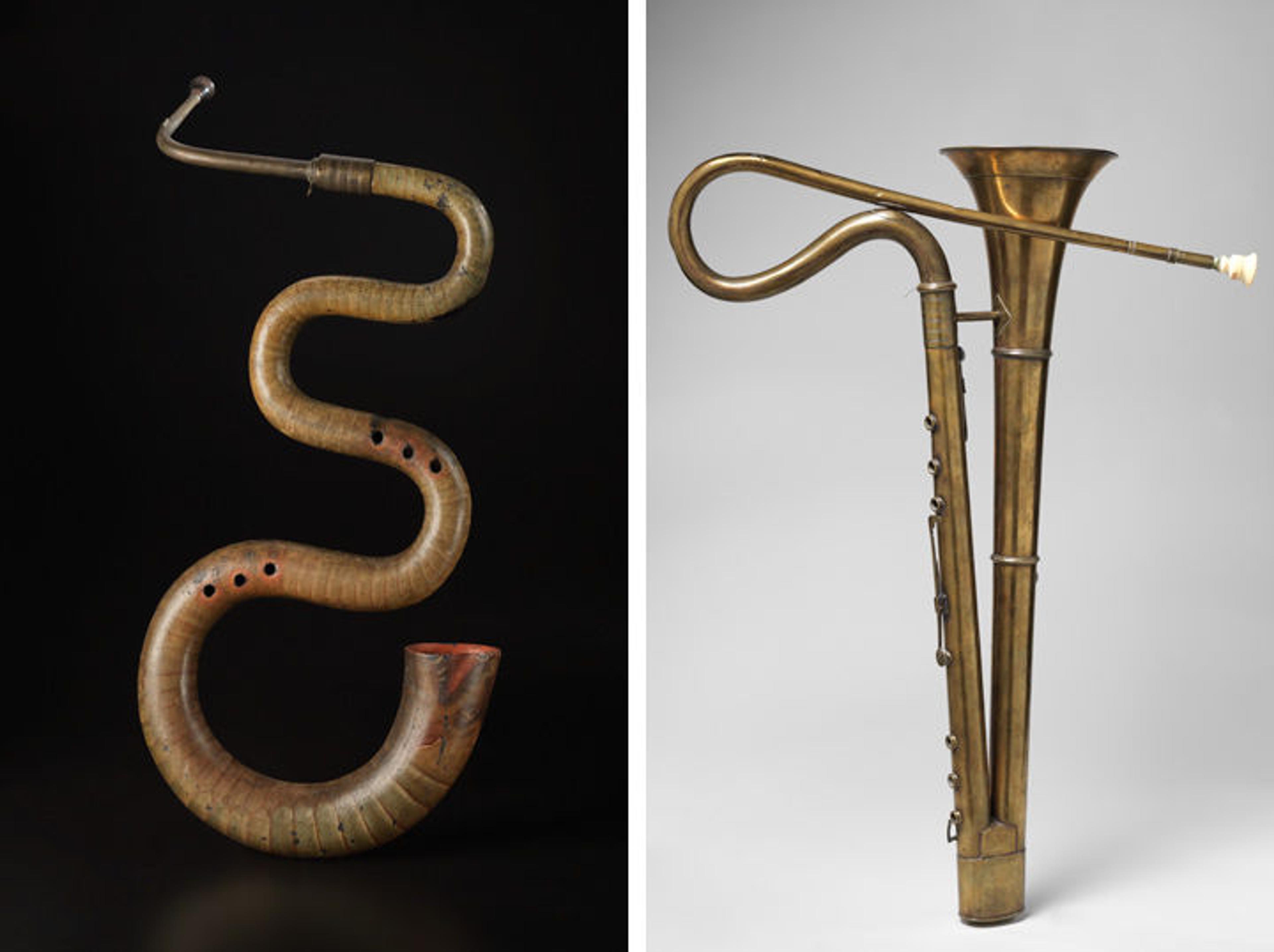
Left: C. Baudouin (French). Serpent, ca. 1820. Paris, France. Wood, leather, paint, brass, 32 3/4 x 4 3/4 x 10 1/4 in. (83.2 x 12.1 x 26 cm). The Metropolitan Museum of Art, New York, Purchase, Robert Alonzo Lehman Bequest, 2012 (2012.568a–c). Right: Frederick Pace (British, 1805–1835). English bass horn in B-flat, ca. 1835. London, England, United Kingdom. Brass, 34 x 7 3/4 x 25 1/8 in. (86.4 x 19.7 x 63.8 cm); diameter (of bell): 7 13/16 in. (19.8 cm). The Metropolitan Museum of Art, New York, The Crosby Brown Collection of Musical Instruments, 1889 (89.4.2028)
Other tuba family relatives owe their distinctive designs to the need for a strong bass line for music on the move. The sousaphone is an iconic member of the American high school marching band and is often noted for its visual impact as much as for its sound, but a number of ingeniously designed portable bass brass instruments predate it. These include the over-the-shoulder sax horns of the Civil War bands and body-hugging helicons.
Meet a baker's dozen of the tuba's extended family throughout this post to celebrate the 12 days of Tuba Christmas. Most of these instruments are on display in Fanfare, so be sure to make gallery 680 a part of your next trip to The Met!
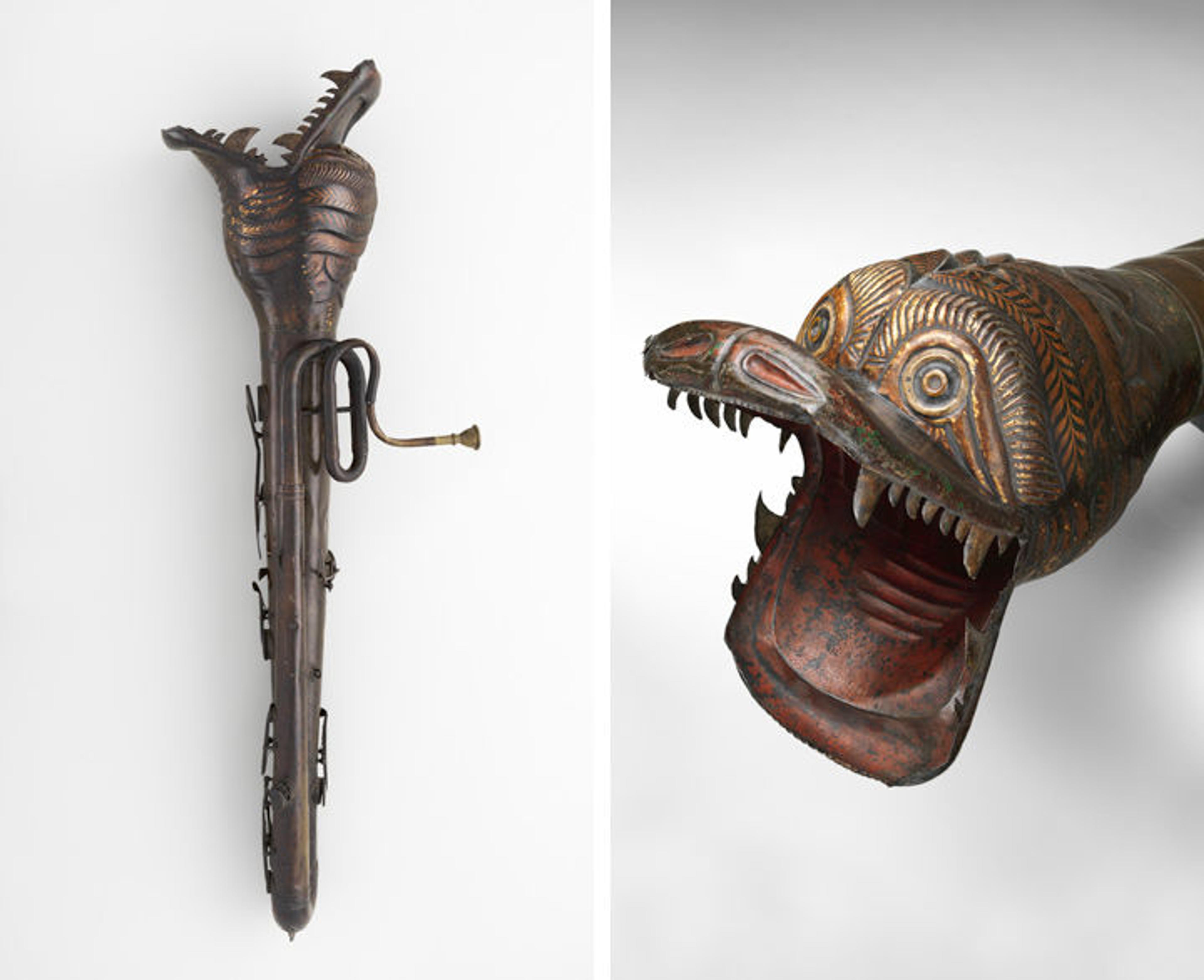
Bass ophicleide in B-flat (full view and detail of bell), ca. 1825. European. Brass, 48 7/16 x 12 1/2 x 7 1/2 in. (123 x 31.8 x 19.1 cm). The Metropolitan Museum of Art, New York, The Crosby Brown Collection of Musical Instruments, 1889 (89.4.2564)
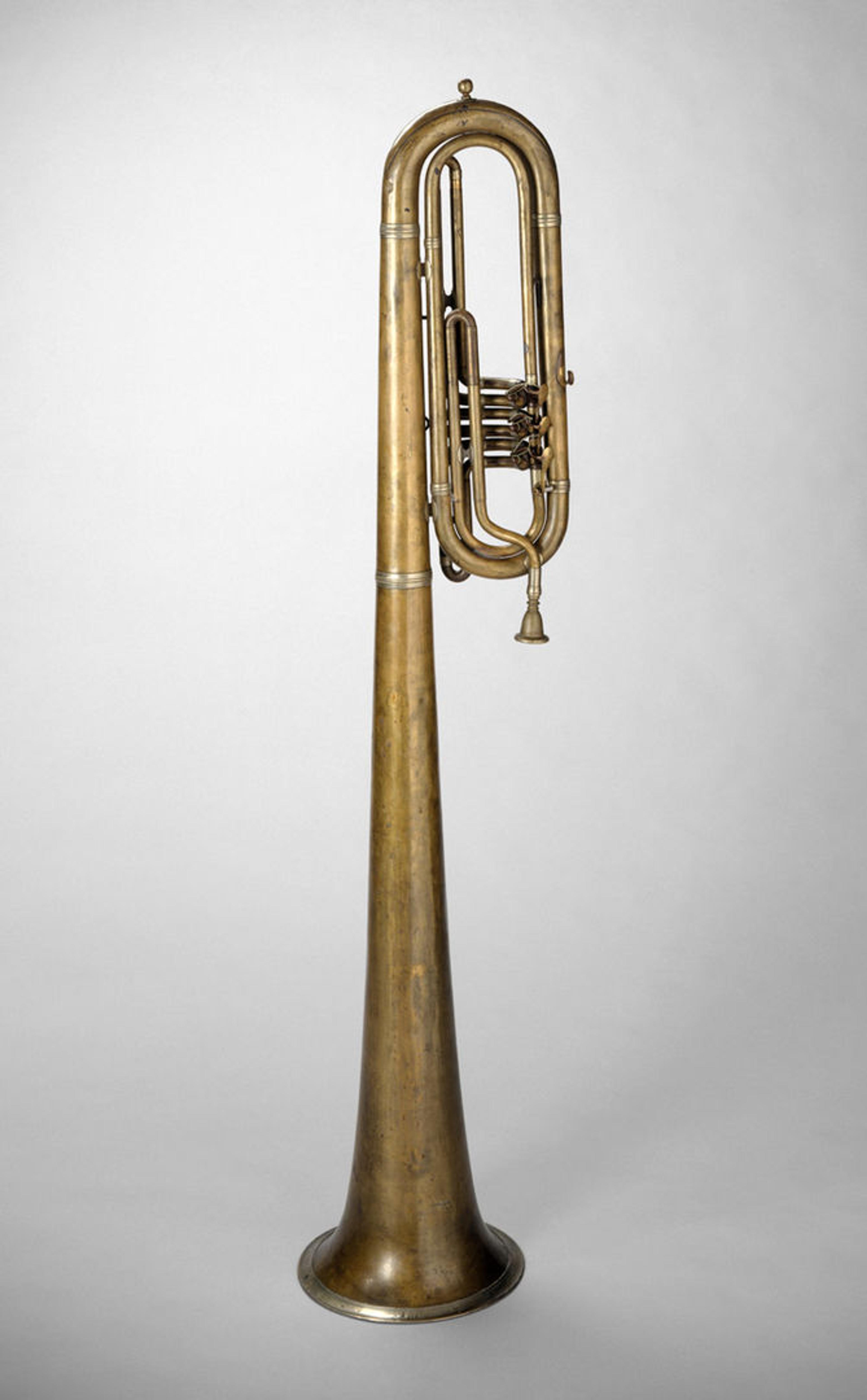
Ernst Seltmann (German, 1828–1883). Over-the-shoulder bass saxhorn in E-flat, ca. 1870. Philadelphia, Pennsylvania, United States. Brass, nickel-silver, 58 1/8 x 9 3/4 x 11 in. (147.6 x 24.8 x 27.9 cm). The Metropolitan Museum of Art, New York, The Crosby Brown Collection of Musical Instruments, 1889 (89.4.2301)
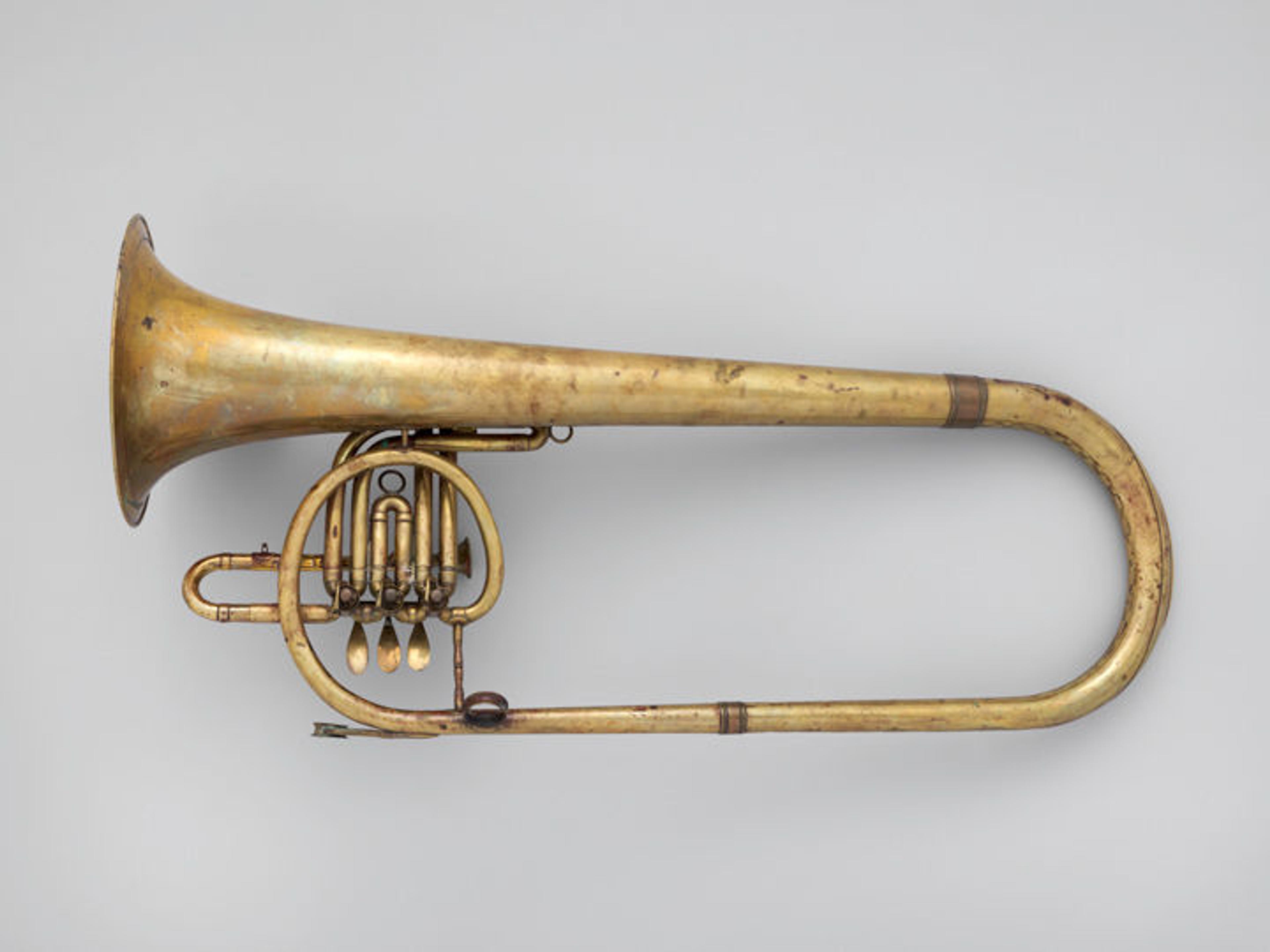
Henry G. Lehnert (German, 1838–1916). Baritone shoulder horn in B-flat, after 1875. Philadelphia, Pennsylvania, United States. Brass, nickel-silver, height: 34 in. (86.3 cm); diameter (of bell): 9 1/2 in. (24.2 cm). The Metropolitan Museum of Art, New York, Rogers Fund, 1989 (1989.184)
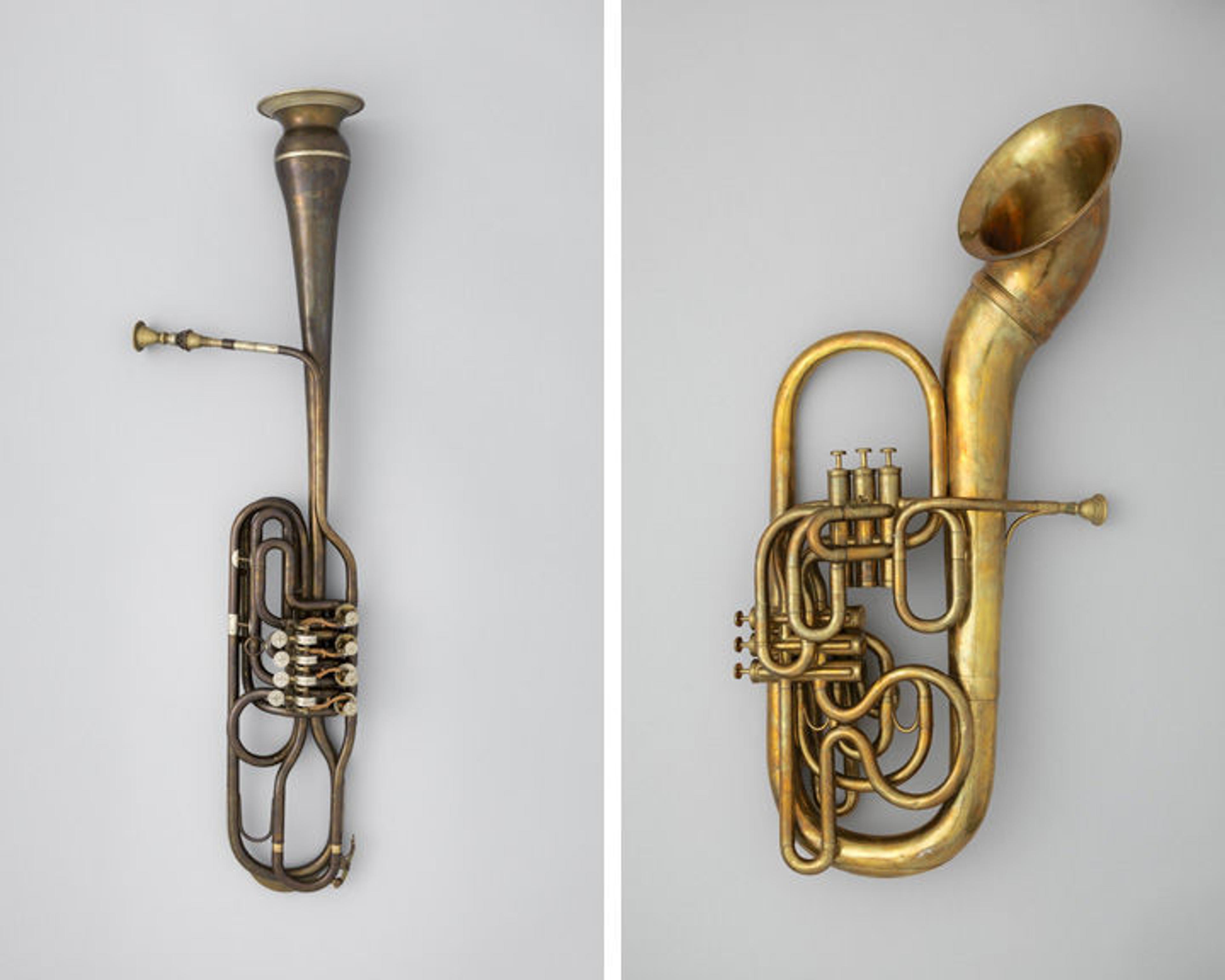
Left: Clavicorno fagotto (brass bassoon) in B-flat, ca. 1888. Italian. Brass, nickel-silver, 36 1/8 x 7 x 11 in. (91.8 x 17.8 x 27.9 cm). The Metropolitan Museum of Art, New York, The Crosby Brown Collection of Musical Instruments, 1889 (89.4.2589). Right: Adolphe (Antoine Joseph) Sax (Belgian, 1814–1894). Bass saxhorn in B-flat, 1863. Paris, France. Brass, 32 1/2 x 19 x 8 in. (82.6 x 48.3 x 20.3 cm). The Metropolitan Museum of Art, New York, Purchase, Clara Mertens Bequest, in memory of André Mertens, 1993 (1993.164)

Helicon, ca. 1920. French. Brass, H: 100 cm; W: 88 cm; D: 30 cm. The Metropolitan Museum of Art, New York, Gift of Drs. Eli and Carolyn Newberger, 2015 (2015.768.2a–e)
Bradley Strauchen-Scherer
Dr. Bradley Strauchen-Scherer is an associate curator in the Department of Musical Instruments.